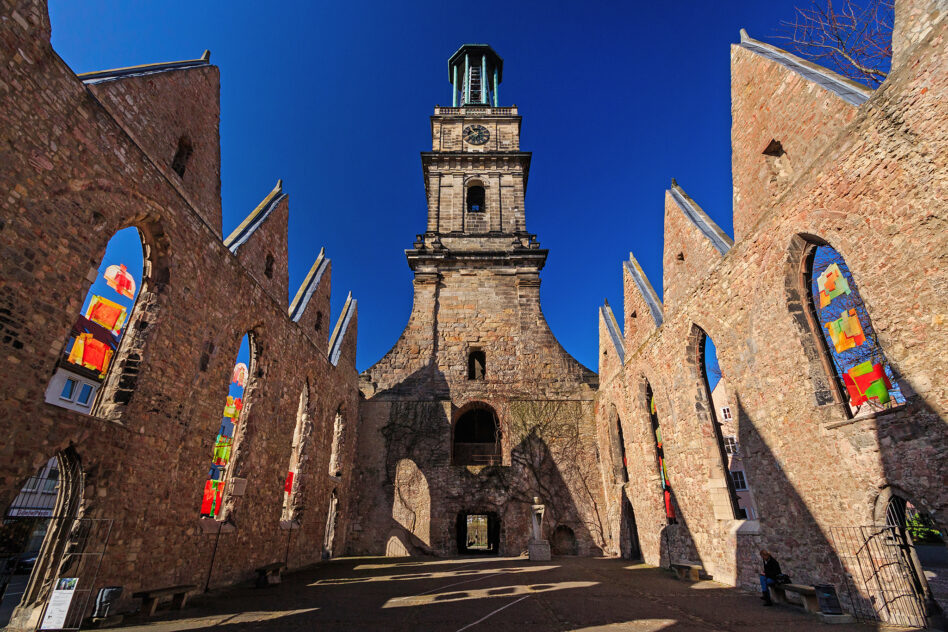 Lars Gerhardts
Lars GerhardtsA church without a roof leaves room for imagination. But not so much is needed at first. It's about remembering. The Reformation in Hanover started from this Gothic hall church. The Aegidienkirche was first mentioned in documents as early as 1163, at a court feast of Henry the Lion. There was probably already a small chapel here in the 10th century. It was then replaced by a Romanesque basilica in the 12th century. Georg Friedrich Laves and Conrad Wilhelm Hase later set the tone for the building. But then came the night of 9 October 1943, when the church was destroyed in the hail of bombs during the Second World War. Only the outer walls with their typical triangular side gables and part of the tower remained standing.
While Hanover was being rebuilt after the war (see city models in the New Town Hall), it was decided to turn this church into a memorial. As a memorial to the victims of war and violence, it has been open for events since 1952. The bells ring four times a day - at 9.05, 12.05, 15.05 and 18.05. As a special gift from the twin city of Hiroshima, the peace bell from 1985 is always tolled on 6 August. This commemorates the dropping of the atomic bomb (see also Hiroshima memorial grove).
However, 9 October serves as a reminder of the hail of bombs from British bombers over Hanover. 1245 people lost their lives directly. In her book "Trümmer, Trauer, Traumata" ("Rubble, Grief, Traumas"), Ursel Fuchs records how she experienced this as a child in the southern part of the city (series Schriften zur Erinnerungskultur in Hannover, vol. 7).
If you then take a closer look at the sculpture "Humility" in the interior, created by the Hanoverian sculptor Prof Kurt Lehmann, and look up to the sky, you will find room for imagination and reflection. It is a venerable, cautionary place with a large window looking upwards.
+ Read more
Aegidienkirchhof 1
30159 Hannover